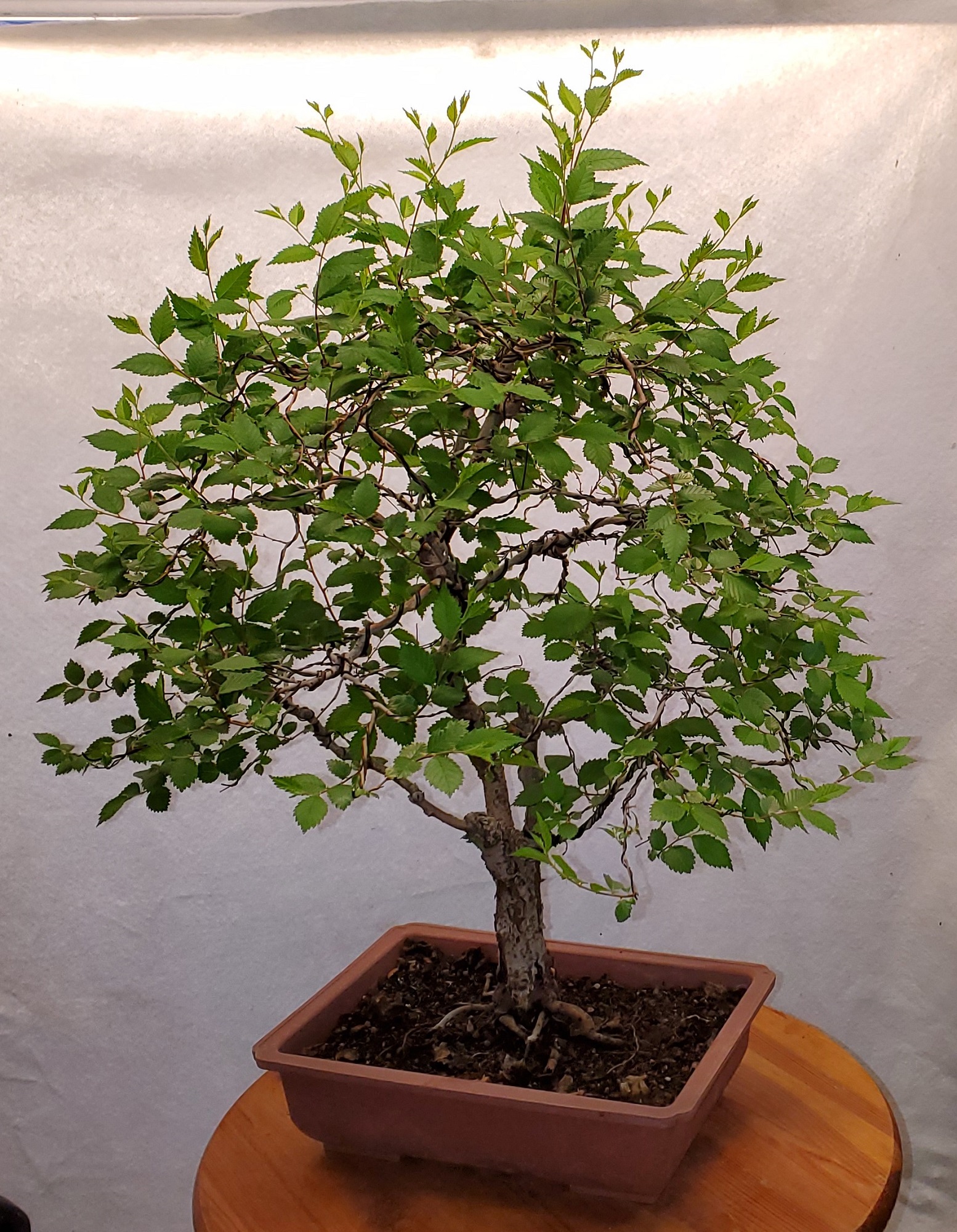Siberian Elm Bonsai trees need regular watering and full to partial sunlight. Pruning is essential for maintaining shape and health.
The Siberian Elm Bonsai tree, known for its resilience, is a popular choice for bonsai enthusiasts. This deciduous tree, native to East Asia, thrives in various conditions and showcases beautiful foliage. Regular watering and sunlight are crucial for its growth.
Pruning helps in maintaining its aesthetic appeal and overall health. Fertilize during the growing season to ensure robust development. This bonsai tree adapts well to different environments, making it suitable for both beginners and experienced growers. With proper care, the Siberian Elm Bonsai can become a stunning addition to any collection, offering both beauty and a rewarding gardening experience.

Credit: www.bonsaiempire.com
Introduction To Siberian Elm Bonsai
The Siberian Elm originates from Eastern Asia. It has been cultivated for centuries. This tree is known for its resilience. It can survive in various climates. Bonsai enthusiasts admire its hardiness.
The Siberian Elm Bonsai has small leaves. This makes it perfect for bonsai. It grows quickly and responds well to pruning. The bark is rough and textured, adding character. It is also drought-tolerant, which is ideal for beginners.
Choosing The Right Soil
Selecting the ideal soil ensures healthy growth for your Siberian Elm Bonsai. Opt for a well-draining, nutrient-rich mix. This promotes robust root development and overall tree vitality.
Ideal Soil Mix
A good soil mix is important for your Siberian Elm Bonsai. Use a mix of akadama, pumice, and lava rock. This mix provides the perfect balance of nutrients. It also helps roots grow strong and healthy. Your bonsai will thrive in this soil mix.
Drainage Importance
Proper drainage is very important for your bonsai. Use a soil mix that drains well. This prevents water from pooling around the roots. Too much water can cause root rot. Ensure your pot has drainage holes. This helps excess water escape easily. Good drainage keeps your bonsai healthy.
Watering Techniques
Siberian Elm Bonsai needs regular watering. Water the tree when the soil feels dry. Check soil moisture every day. Use your finger to test the soil. If it’s dry, water the tree. In summer, water more often.
Overwatering can harm your bonsai. Watch for yellow leaves. Soft, mushy roots are a bad sign. Mold on the soil is also a warning. Reduce watering if you see these signs. Healthy bonsai has firm roots.

Credit: rockymtnbonsai.com
Pruning And Shaping
Pruning the Siberian Elm Bonsai is best done in early spring. This is when new growth begins. Another good time is late autumn, after the leaves fall. Pruning during these times helps the tree heal quickly. Avoid pruning in winter or summer. The tree may be stressed during these seasons.
Wiring is a common method to shape your bonsai. Wrap wires around branches to guide their growth. Make sure to check the wires regularly. They should not cut into the bark. Another method is clip-and-grow. Cut branches and let new ones grow in the desired direction. Both methods require patience and care.
Fertilization Guidelines
Organic fertilizers are great for Siberian Elm Bonsai trees. They provide essential nutrients slowly. Chemical fertilizers act faster. They give a quick nutrient boost. Both types have their own benefits. Choose the one that suits your tree’s needs.
Spring and summer are the best seasons to fertilize. Apply fertilizer every two weeks during these seasons. In autumn, reduce the frequency to once a month. Avoid fertilizing during winter. The tree needs rest during this period.
Pest And Disease Management
The Siberian Elm Bonsai often faces pests. Aphids are small bugs that suck sap. Spider mites are tiny and hard to see. These pests can damage leaves. Scale insects look like tiny bumps. They also suck sap from the tree. Caterpillars may eat the leaves. Mealybugs are white and fluffy. They harm by sucking plant juices.
Good care helps prevent diseases. Water the tree properly. Too much water causes root rot. Proper air circulation is important. It keeps the tree healthy. Clean tools help stop the spread of disease. Regularly check your tree for signs of problems. Early detection is key. Remove dead leaves and branches. They can harbor diseases. Keep your tree in a sunny spot. Sunlight helps keep it healthy.
Seasonal Care Tips
The Siberian Elm Bonsai needs more water in spring and summer. Ensure the soil is consistently moist but not soggy. Place the tree in a spot with plenty of sunlight. Fertilize the tree every two weeks using a balanced fertilizer. Prune the branches to maintain the desired shape. Watch for pests like aphids and treat them promptly.
Reduce watering in fall and winter. Keep the soil slightly dry but don’t let it dry out completely. Move the bonsai to a cooler location to mimic its natural environment. Stop fertilizing during this period. Protect the tree from frost by bringing it indoors or using frost cloths. Check the tree regularly for any signs of stress or disease.

Credit: rockymtnbonsai.com
Repotting Essentials
Repot your Siberian Elm bonsai every two years. Spring is the best time for repotting. The tree will be actively growing then. Check for roots growing out of the pot. This is a sign that repotting is needed.
- Remove the tree from its pot gently.
- Trim the roots carefully with clean scissors.
- Place a layer of fresh soil in the new pot.
- Position the tree in the center of the pot.
- Fill the pot with soil around the tree roots.
- Water the tree thoroughly after repotting.
Conclusion
Caring for a Siberian Elm Bonsai can be rewarding and fulfilling. Follow the tips and techniques shared to ensure healthy growth. Remember to water regularly, provide adequate sunlight, and prune as needed. With proper care, your Siberian Elm Bonsai will thrive and bring beauty to your space.
Enjoy your bonsai journey!
